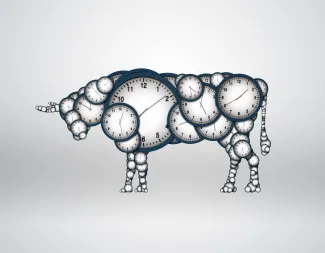
The Bull Market - By the Numbers
As the bull market enters its fourth year, we take a look at where this cycle measures up against other modern bull markets dating back to 1957. While all bull markets have been fraught with volatility, fear, economic angst, and political uncertainty, many prognosticators are quick to declare their predictions of what’s ahead. I am going to refrain from throwing my hat in the ring with my own guess. Instead, to enforce a healthy relationship with the probabilities of potential outcomes, I’ll simply compare the stats of the eleven cycles we’ve experienced since 1957. You decide, are we due? Is there room to run?
Remember: Optimism doesn’t mean we always wear rose-colored glasses. It means we have a bias towards positive outcomes.
Investments and financial planning are individualized pursuits. If you have specific questions about how to apply this or any other data to your own financial plan or goals, please feel free to reach out.
Hypothetical growth of $100,000

Bull Markets and Corrections (1957–Present)
1957–1961 Bull Market
Duration: October 1957 – December 1961
Corrections:
- - 1959: ~10% correction
- - 1960: ~10% correction
1962–1966 Bull Market
Duration: June 1962 – February 1966
Corrections:
- - 1963: ~11% correction
- - 1965: ~10% correction
1966–1968 Bull Market
Duration: October 1966 – November 1968
Corrections:
- - 1967: ~11% correction
1970–1973 Bull Market
Duration: May 1970 – January 1973
Corrections:
- - 1971: ~10% correction
- - 1972: ~10% correction
1974–1980 Bull Market
Duration: October 1974 – November 1980
Corrections:
- - 1976: ~10% correction
- - 1978: ~14% correction
- - 1979: ~10% correction
1982–1987 Bull Market
Duration: August 1982 – August 1987
Corrections:
- - 1983: ~14% correction
- - 1984: ~14% correction
- - 1986: ~10% correction
1987–2000 Bull Market
Duration: December 1987 – March 2000
Corrections:
- - 1990: ~19% correction (most significant of this period)
- - 1994: ~10% correction
- - 1998: ~19% correction
2002–2007 Bull Market
Duration: October 2002 – October 2007
Corrections:
- - 2004: ~10% correction
- - 2006: ~10% correction
2009–2020 Bull Market
Duration: March 2009 – February 2020
Corrections:
- - 2010: ~16% correction
- - 2011: ~19% correction
- - 2015: ~12% correction
- - 2018: ~20% correction (sometimes viewed as a brief bear market)
2020–2022 Bull Market
Duration: March 2020 – January 2022
Corrections:
- - 2020: ~10% correction shortly after the COVID-19 recovery
- - 2022: Several ~10% corrections within a broader bear market
2022–Present Bull Market
Duration: October 2022 – Present
Corrections:
- - March–April: ~19% correction driven by uncertainty surrounding tariffs and global trade policies
Summary of Corrections
- Total Corrections: 31 corrections of 10% or more across bull markets since 1957
Average per Bull Market: Approximately 3–4 corrections per cycle
Content in this material is for general information only and not intended to provide specific advice or recommendations for any individual. All performance referenced is historical and is no guarantee of future results. All indices are unmanaged and may not be invested into directly.
This is a hypothetical example and is not representative of any specific situation. Your results will vary. The hypothetical rates of return used do not reflect the deduction of fees and charges inherent to investing.


